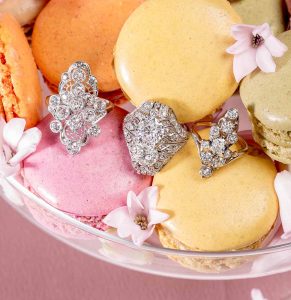
Rings with special significance or purpose have been valued throughout history. Wedding rings, engagement rings, signet rings, and rings with seals all had an important place in jewelry history. However, some rings were simply worn for the love of luxury. Ancient Greeks and Romans certainly enjoyed loading their fingers with extravagant baubles.
Pliny accepted this love of rings and brilliant gems as an aspect of the universal desire for luxury: ‘let women have gold in their bracelets and covering their fingers and on their necks, ears and tresses, let gold chains run at random round their waists and let little bags of pearls hang invisible suspended from their lady owner’s neck, so that even in their sleep they may retain the consciousness of possessing gems.’1
The Middle Ages were no exception. Gemstones and their supposed magical and medicinal properties were a partial impetus for the popularity of rings. Rings of this era often have high settings to better put on a display of their beauty. Soon to follow were stirrup styles with plain hoops holding an inset gem. Circa the 15th century, claws were cut from the collet giving a more decorative effect. Renaissance Era rings were wrought by master craftsmen and were highly detailed. Animals, figurals, alone and in groups, along with monsters and flowers, danced upon the wearer’s fingers. The 17th century brought a modicum of demure design, and the gemstones became the star of the show, with less artistry and more bling. During the 18th century, light and airy ‘giardinetti’ styles and openwork bugs, botanicals, and bows accented the gems. By the late 18th century, elongated oval, navette, lozenge, and octagonal bezels bore dazzling gems. These longer rings allowed for painted miniatures from nature, cameos, and other carved designs. These shapes never fully went out of style and formed the basis of what we now think of as “dinner rings”.
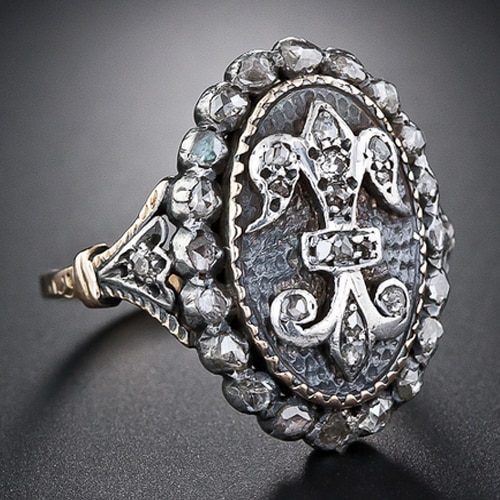
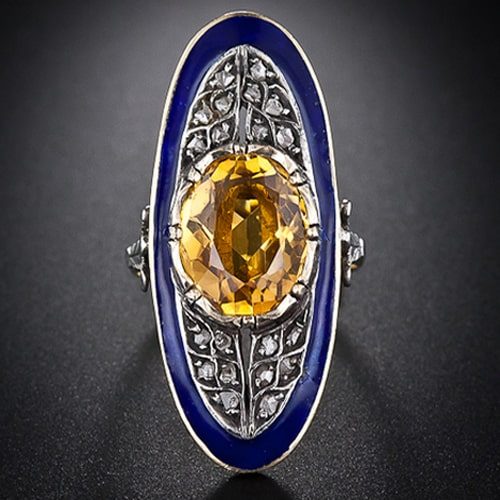
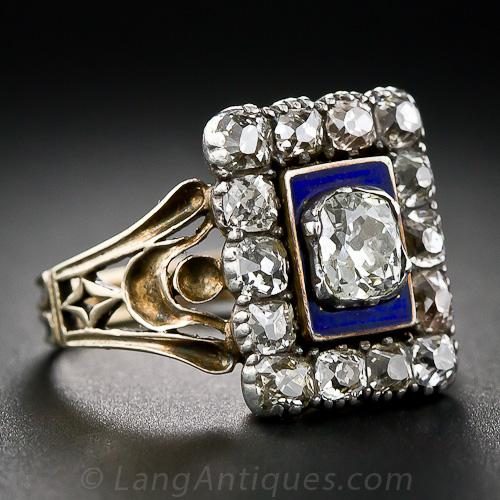
The 19th century brought cluster rings with small stones laid out in patterns and wheels. Micromosaics, intaglios, and cameos were featured, most with gemstone accents and surrounds. Ancient revival styles from Egypt, Roman, Byzantine, Medieval, and Renaissance designs were all the rage. Late in the 19th century, the value of the gemstones set in the ring became the focus.
Running contrary to this aesthetic, Art Nouveau’s stylized nature emphasized art over intrinsic value, and the gemstones were secondary. What endured from that era, again, was the elongated form stretching from knuckle to knuckle, providing plenty of real estate to flash one’s wealth. Regardless of the beauty and artistry of these 19th-century geniuses, wealthy patrons wanted to brandish their riches, not just display their good taste.
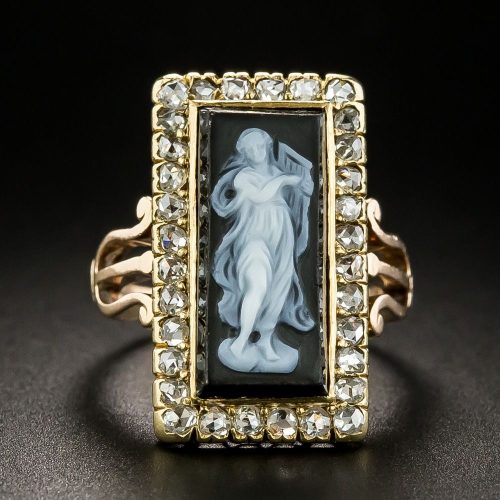
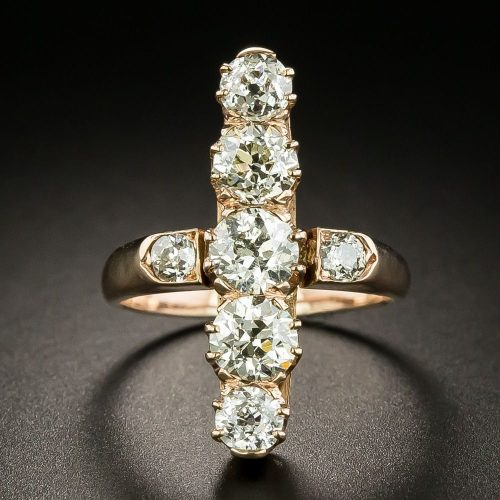

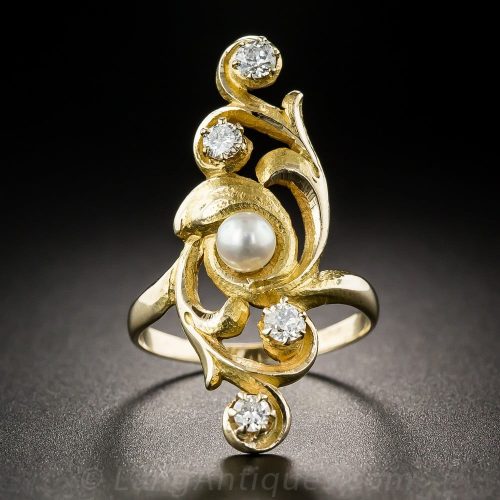
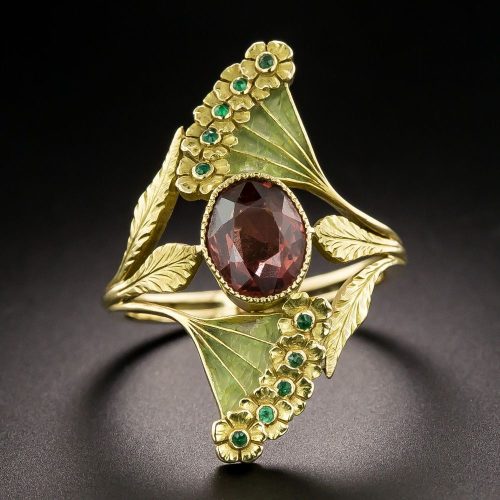
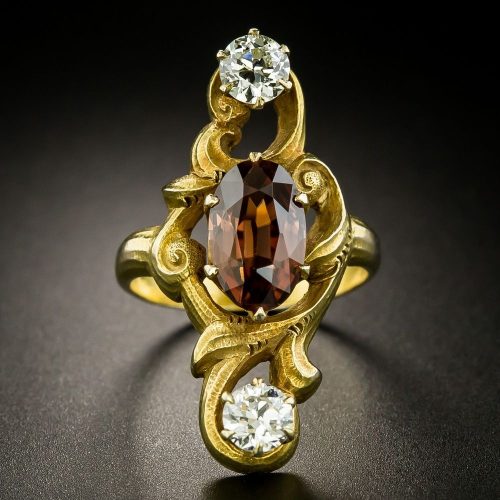
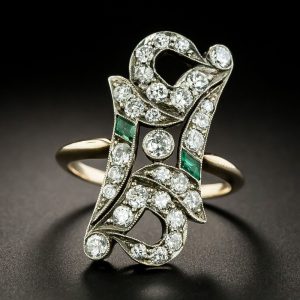
At the fin-de-siècle, King Edward himself set a royal example to eat, drink, and be merry. Dazzling affairs with dapper gentlemen and bedazzling women were the order of the day. Edwardian Era rings took their cue from 18th-century navette-shaped rings with pointed oval bezels and the more concurrent Art Nouveau elongated designs. An Edwardian update to the look arose from the emerging ability of jewelers to use platinum, working it into ethereal and lacy creations and edging it all with tiny millegrained orbs enhancing the lust for the style. To further invigorate this popular trend, calibré-cut gems accented the myriad of diamonds flowing in from South Africa. Sporting rings on every finger, the wearer might choose to be monochrome or harlequin, mixing or matching, or a smattering of both. Unfortunately, the Edwardian Era was upended by war, stagnating the jewelry industry until the end of the conflict.

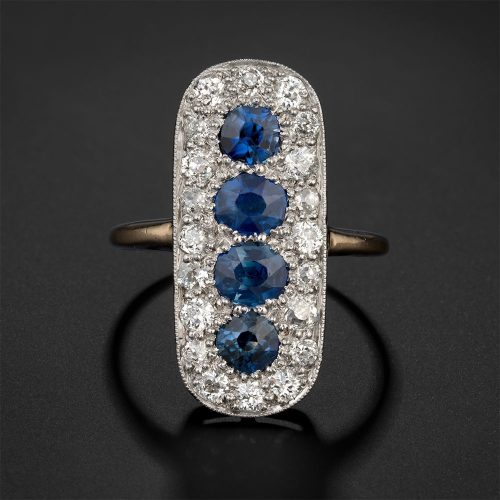
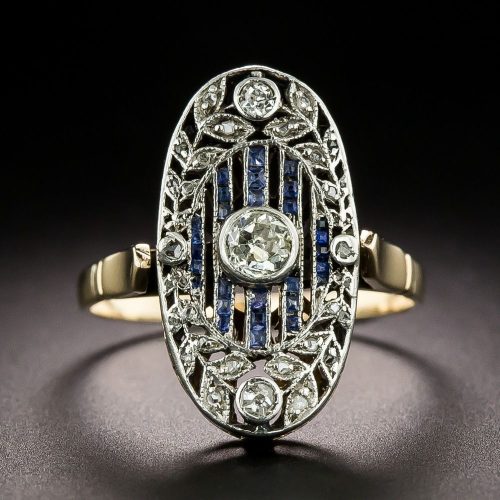
After the lean war years, the world emerged ready to party, and the “Roaring 20s” were inaugurated. During Prohibition, hard liquor and, therefore cocktails were more available than beer or wine; thus, the term “cocktail party” arose c.1917. Speakeasy or cocktail party drinking, dancing, and partying demanded your best bib and tucker, with all the jewelry you could muster. The term cocktail ring emerged to describe these jazzy accompaniments to the Prohibition Era.
Coinciding with the “roaring 20’s,” the Art Deco aesthetic in jewelry and the arts energized the look of the period. Jewelry was worn on a grand scale, and a ring on every finger was no exception. Beyond the “north-south” navette shape, the latest styles embraced every angular outline imaginable. Mixing and contrasting contemporary gemstone cuts and arranging them in fantastic geometric designs set these rings off from the styles that presaged them. Art Deco rings are eminently identifiable and eternally fashionable.
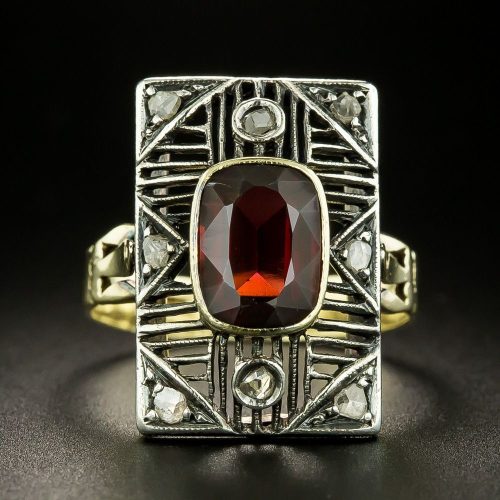
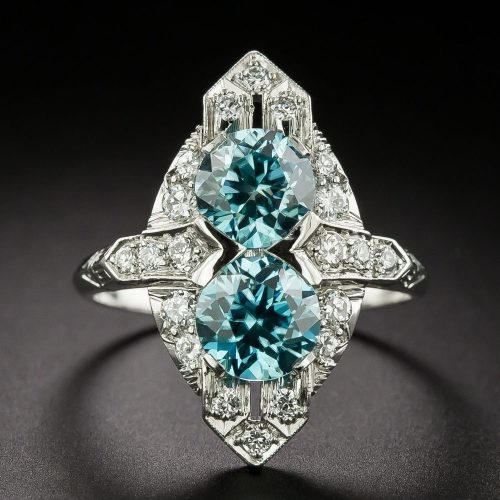
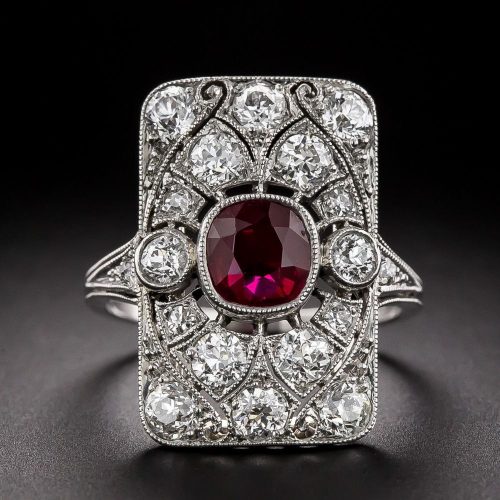
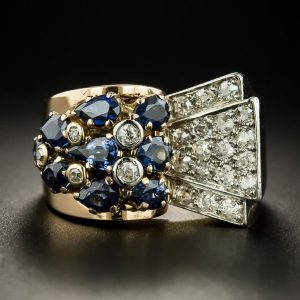
Once Prohibition ended in the United States, the speakeasies shuttered and the wild cocktail parties morphed into more elegant and sedate dinner parties. It remained de rigueur to flaunt one’s wealth with jewelry and rings still excelling. The cocktail ring became the dinner ring and non-betrothal digit décor lived on.
Nearing the 1940s, platinum was out and gold reigned supreme. Mixing and matching gold colors from yellow to rose, to green to white created a stunning backdrop for gemstones of all sizes, shapes, and colors. Rings ran the gamut from conservative to outrageous. The 1950s once again highlighted dazzling diamond creations in platinum or white gold. Alongside this fashion for an all-white look was a passion for large colored gemstones. Aquamarine, morganite, jadeite, amethyst, and citrine, to name a few, were large and in charge when it came to rings.
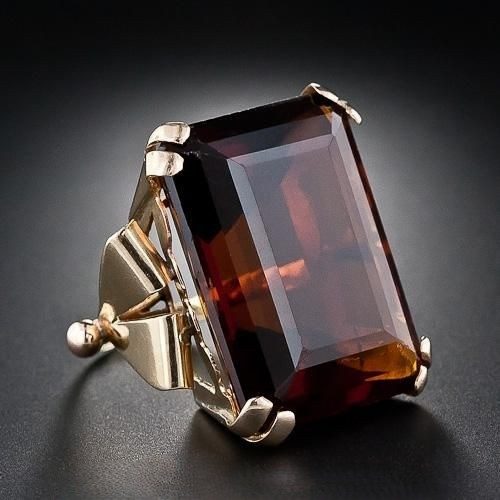
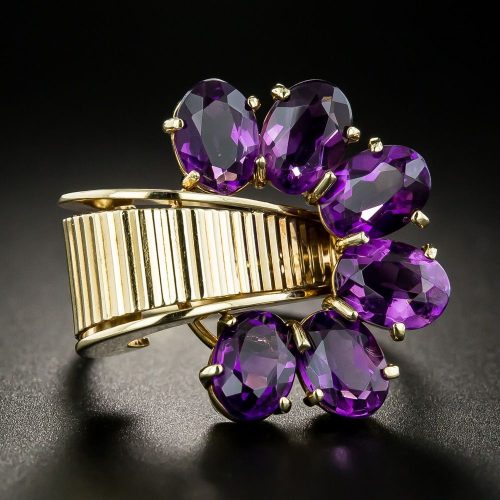
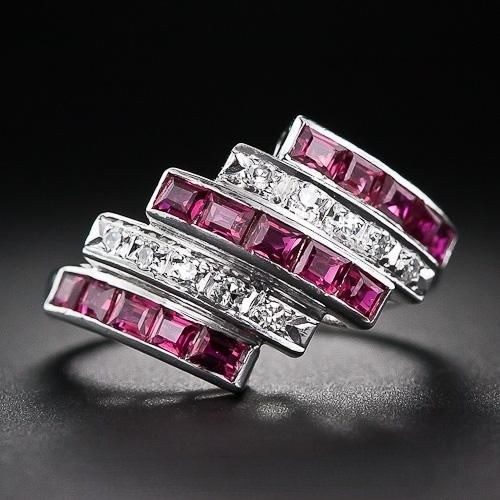


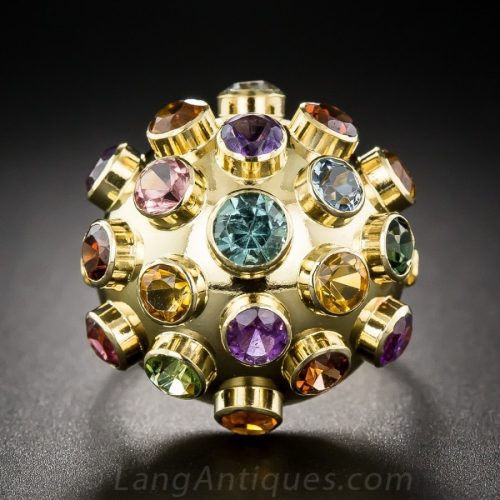
Ring styles continue to evolve, but the result is still the same. Call it what you will, decorative, cocktail, dinner, or right-hand ring, their popularity persists. Through the years, the passion for “wining and dining” has not waned and is still best accompanied by a display of one’s rings sans pareil.
Sources
- Church, Rachel. Rings. London: Thames & Hudson, Victoria and Albert Museum, 2017.
Scarisbrick, Diana. Rings: Jewelry of Power, Love and Loyalty. London: Thames & Hudson, Ltd., 2007.
Notes
- Scarisbrick, p.232↵